False Facts About Garlic You Thought Were True
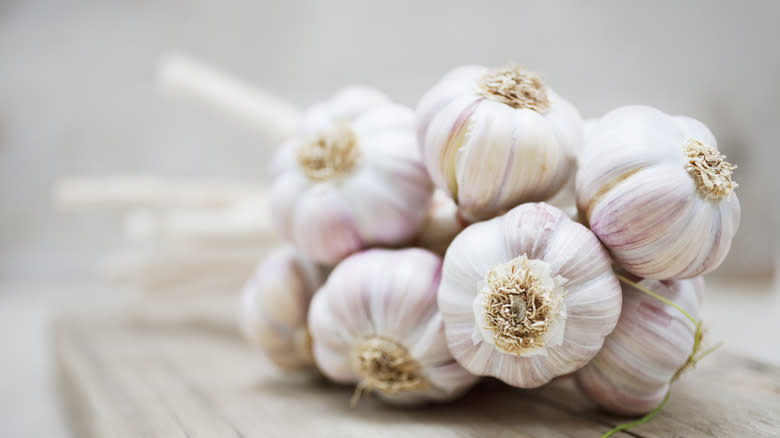
Garlic is one of the most widely used ingredients around. It's usually part of the base of any recipe you make from soups and stews to curries and pasta sauces — you can even find garlic chocolate chip cookies. So, we probably all feel like we know a lot about garlic. But the truth is there might be some "facts" you think you know about garlic that are actually false.
If you believe sprouted garlic isn't safe to eat or that you can eat garlic to repel mosquitos, you might be in need of a reality check. These kinds of misconceptions are common — most of us have gotten our facts wrong about garlic at one point or another. But being in the know isn't just about being right or wrong. It can also help improve your cooking in some cases.
From its health uses to its culinary application, there are a range of fallacies about garlic we need to stop believing. Here are 13 false facts about garlic you thought were true.
Read more: 16 Little-Known Facts About Salt
There's Only One Type Of Garlic
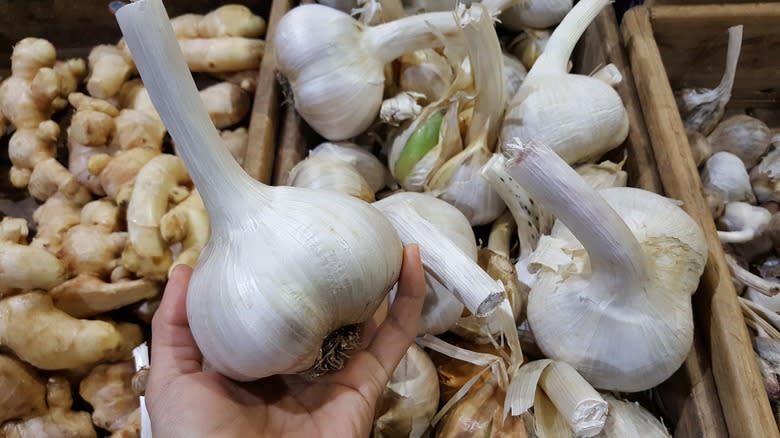
If you believe there's only one type of garlic, you've fallen for one of the most common garlic misconceptions around. There are two primary types of garlic: hardneck garlic and softneck garlic. Then, within these two categories, there are distinct forms. For instance, Rocambole and purple stripe are both forms of hardneck garlic.
Hardneck garlic has a stiff, woody stalk emerging from the center of the bulb. It produces a scape, which is a flower stalk that emerges from the center of the plant. These scapes are often harvested before flowering and can be used in cooking. It has larger cloves that are easier to peel compared to softneck varieties. The flavor of hardneck garlic tends to be more complex and intense.
Softneck garlic lacks the stiff central stalk found in hardneck garlic. Instead, the stalks are soft and flexible, and they don't produce scapes. Softneck garlic bulbs often have multiple layers of cloves surrounding a central core, and they tend to have a longer shelf life than hardneck varieties. The flavor of this variety is generally milder and sweeter than hardneck garlic.
Then you have other forms of garlic that are lesser known. There's wild garlic, which grows naturally in woodlands and has mildly garlicky leaves. And let's not forget elephant garlic, which has giant bulbs and cloves, and is more closely related to leeks than to standard garlic.
It's Unsafe To Eat Sprouted Garlic
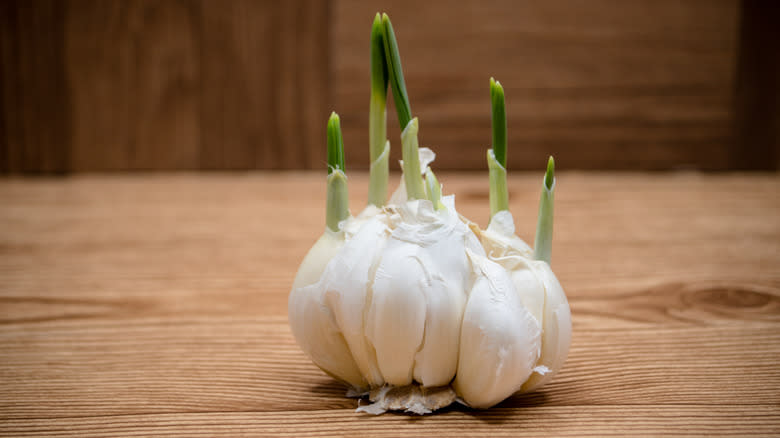
You get the garlic out of your pantry to start making dinner. But — oh no — it has sprouted little green shoots. That means it's not safe to eat, right? Well, actually, that's false. Many people believe eating sprouted garlic is unsafe. Maybe a parent told you not to eat it or perhaps you just thought it looked dodgy and best to avoid. However, it's completely safe to eat garlic that has sprouted.
If you're not sure what these sprouts are, they're new garlic bulls just starting to grow. You see, you can grow a totally new bulb of garlic from just one clove under the correct growing conditions. So if your garlic is sprouting, this means it's been exposed to excessive heat, moisture, or light, making it think it's time to start growing a new garlic bulb.
While sprouted garlic is safe to eat, it isn't the tastiest garlic. It's known to have a bitter flavor. This isn't from the sprout itself (which has a mild, grassy taste) but from the old clove surrounding it. As garlic ages, it loses some of its natural sugars and tends to taste more intense and bitter. So you can safely eat sprouted garlic, but you might notice a flavor difference, especially in a garlic-forward recipe.
You Should Add Garlic To The Pan At The Same Time As Onion
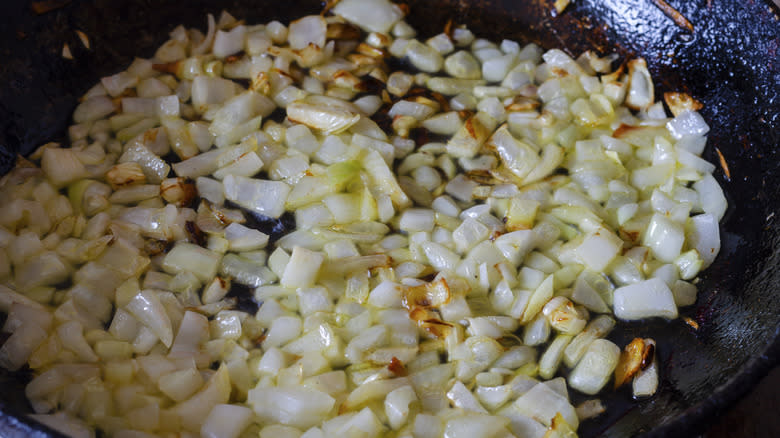
So many people believe that onion and garlic should hit a hot pan at the same time. Yes, these are the base aromatics for many recipes, but they have drastically different cooking times. When you add them to a pan at the same time, you'll either end up with burned, bitter garlic or undercooked onions.
Onions take around 10 minutes to turn translucent — an indicator that they're cooked — while garlic only needs about 20 seconds to one minute in a hot pan before other ingredients are added. So what do you do? Well, start by sautéing your onions as usual. When they're cooked, push them to one side of the pan, add a little more oil in the space you're cleared, and toss in the garlic. Sauté it for no more than a minute, until it starts to become fragrant. Then mix it together with the onions and add any other ingredients the recipe calls for, such as veggies, canned tomatoes, or stock. This way you'll have well-cooked onions and perfectly fragrant garlic.
Eating Garlic Repels Mosquitoes
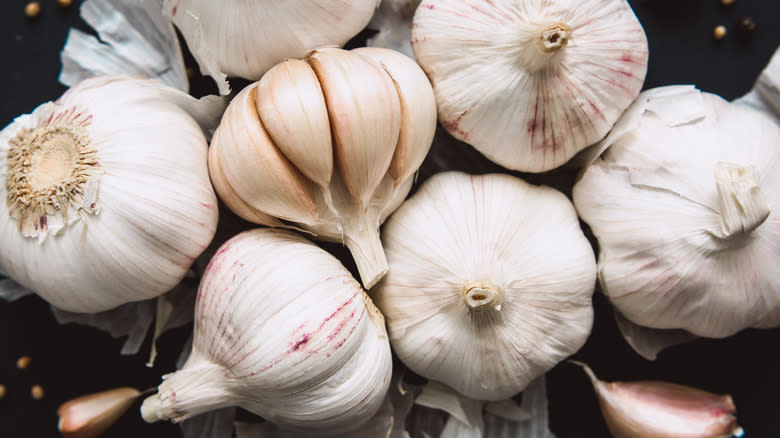
It's a common misconception that you can use garlic to repel mosquitoes, but the scientific evidence supporting this claim is basically nonexistent. In fact, a double-blinded study showed that consuming garlic had no significant impact when it came to preventing mosquito bites. If you've been chowing down on raw garlic or eating as much 40-clove chicken as humanly possible to keep pesky bloodsuckers off your skin, you should probably come up with a new tactic.
While garlic does contain compounds that have been shown to have insect-repellent properties in laboratory settings — such as dithiane and thiophene — studies on its effectiveness as a mosquito repellent for humans aren't promising. So there's some logic behind the assumption. However, garlic isn't considered a reliable or effective method for mosquito control. Using proven mosquito repellents, such as DEET, is a better (but admittedly less delicious) way to keep mozzies at bay.
Garlic Can Cure A Cold
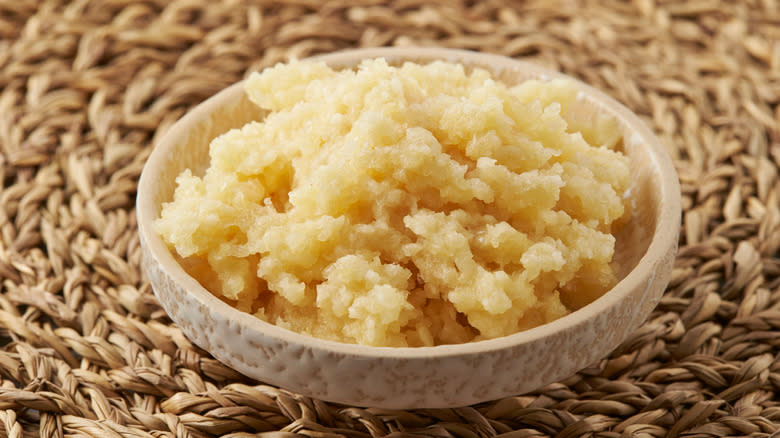
You've got the sniffles and you can't wait to feel better. You might have heard that garlic can cure a cold, but this isn't strictly true. According to the National Institutes for Health, there just isn't enough evidence to suggest that garlic can treat or cure a cold. That's not to say it definitely does nothing, but you should think twice before you start chomping down cloves of raw garlic.
The Cochrane Library published a systematic review of studies into the use of garlic to treat the common cold. Only one of the studies it reviewed met the criteria for inclusion in the review, which suggests some studies into using garlic to treat colds aren't rigorously scientific. The review showed that people who took garlic daily were slightly less likely to get colds than people who took a placebo. But when people did get colds, the length of the cold was similar in both groups, so garlic didn't magically cure it. The people who performed this review concluded that more research was needed to ascertain whether garlic had any benefits in treating or preventing colds, as there isn't currently enough high-quality evidence.
This means that if you're currently certain that garlic will cure your cold, you're probably wrong. However, there is a chance that, down the line, there'll be more evidence to suggest garlic can help prevent or lessen the duration of a cold, so don't give up hope yet.
Garlic Can Cure A Yeast Infection
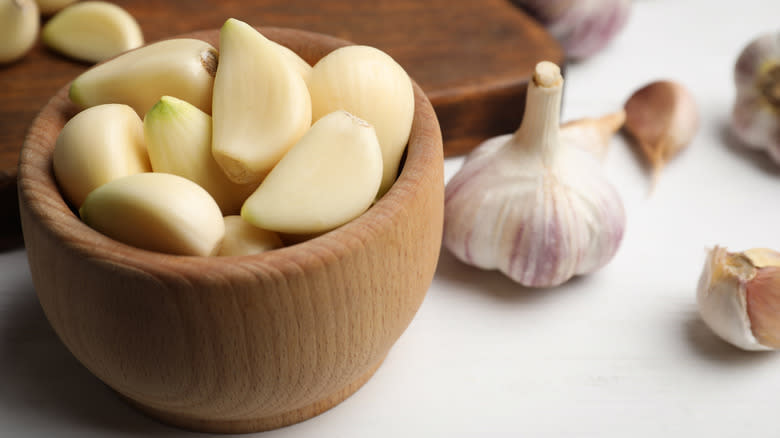
Yeast infections are an extremely common gynecological issue. And, one pervasive home remedy is that garlic can cure a yeast infection. And, we're not talking orally. The idea is that you can insert a clove of garlic into your vagina to get rid of a yeast infection — but this is a myth.
According to OB/GYN Dr. Jennifer Gunter on X (formerly known as Twitter), using garlic to treat a yeast infection is not only ineffective but could be harmful. She notes that, while garlic does have antifungal properties in a lab environment, this doesn't translate to real life. There's no scientific proof that garlic can get rid of yeast infections and any anecdotal evidence may be down to the placebo effect — or those who self-treated in this way might not have even had a yeast infection to begin with.
And there are plenty of reasons why you shouldn't use garlic internally. For one, it might be dirty from the soil it was grown in, which could cause further problems. There's also the potential that it might encourage the growth of a bacterial biofilm, which would be bad news for your vagina. So if you believe you're suffering from a yeast infection, step away from that clove and consult a medical professional instead.
Garlic Needs To Be Dried Before You Can Cook With It
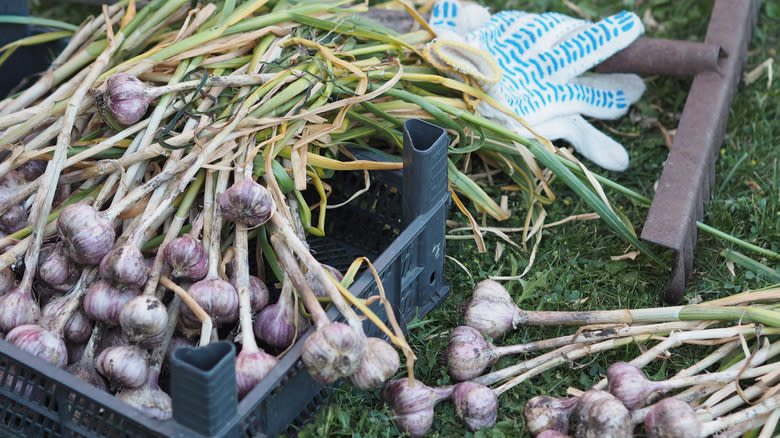
When you buy a bulb of garlic from the store, that garlic has been left to dry. So you might assume that you have to wait for garlic to dry out in this way before you can cook with it. After all, this is usually the only garlic you encounter, so it makes sense to believe it's the way garlic has to be. However, the truth is it doesn't need to be dried before you can cook with it. And sometimes you can even buy this un-dried garlic.
It's known as wet garlic. This is the way that garlic is when it comes out of the ground. So if you've ever grown your own garlic, you will have encountered wet garlic. The reason that garlic is dried is to increase its shelf-life. It won't last as wet garlic and will eventually dry out either way, which is why most garlic is sold in its usual dried form (this isn't to be confused with dehydrated garlic flakes or granules, though).
You can sometimes buy wet garlic at farmers' markets or specialty produce stores, especially early in the season. While you cook with it in much the same way as regular dried garlic, it's sweeter and less pungent, so it's particularly good raw or where you don't want too intense a garlic flavor.
Dehydrated Garlic Tastes As Good As Fresh Garlic

You've probably come across jars of dehydrated garlic, sold as garlic powder, garlic flakes, or granulated garlic. Some people might tell you that dehydrated garlic tastes just the same as fresh garlic in recipes, but this is absolutely untrue. Fresh garlic has a different flavor from dehydrated garlic. It's less complex and, honestly, just not as good.
Dehydrated garlic can be quite pungent, but in a one-note way. But fresh garlic is so much more aromatic. If you tried two dishes side by side that were exactly the same but one used fresh garlic and the other used dehydrated, we can almost guarantee you'd like the fresh garlic version better.
But that's not to say that dehydrated garlic doesn't have its uses. Powdered garlic and garlic granules especially are great for dry rubs and other powdered seasonings, such as french fry seasonings. If you want the best-quality dehydrated garlic, you can even make your own garlic powder.
Black Garlic Is Fermented
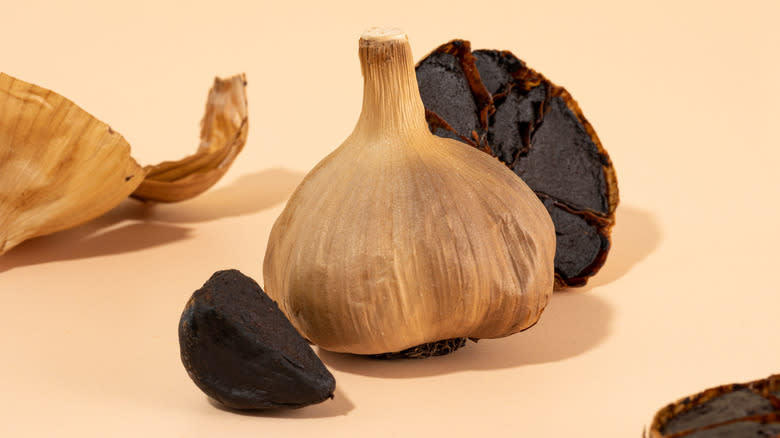
You've probably heard of black garlic, with its sweet notes and soft, sticky texture. It's a delicious ingredient for elevating meals, but there's a common misconception about it. Most people believe that black garlic is fermented. It's even sometimes labeled as fermented black garlic. But the truth is that it isn't fermented at all.
Fermentation is a process driven by microbes, such as yeast, bacteria, and fungi. Black garlic, on the other hand, is transformed by being kept at a consistently warm temperature over a few weeks. You can even make black garlic yourself at home by using a slow cooker to keep it at a consistent temperature.
The reactions that turn garlic that beautiful black aren't a result of fermentation, but rather heat. There's the Maillard reaction, which is also responsible for the deliciousness of toast or browned cheese on a pizza. Plus, caramelization plays a role in breaking down the sugars in garlic, making the flavors more complex. So while it might seem as though black garlic is fermented, it actually undergoes different — but no less magical — processes.
Italian Food Is Heavy On Garlic
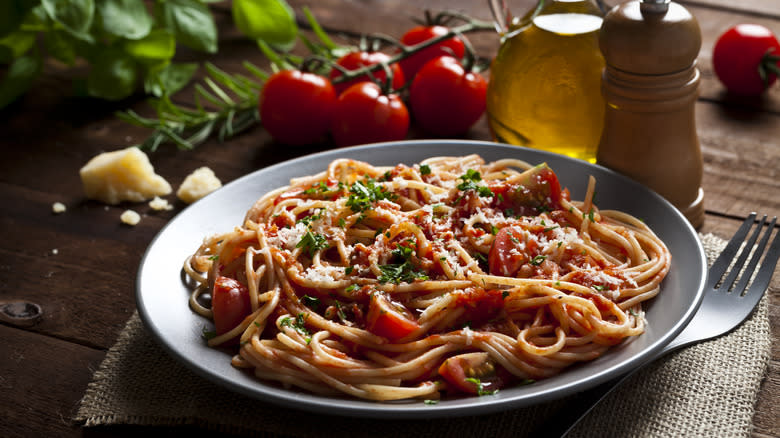
If someone were to say that Italian food uses a lot of garlic, you'd probably agree. And while that might be true of Italian American food, in Italy it's another, more complex matter altogether. But the gist of it is that traditional Italian food is often fairly light on garlic when it's used at all. This all dates back to times from the Middle Ages to the 1800s and beyond. Back in the Middle Ages, spices such as cloves, cinnamon, nutmeg, and pepper began to be imported from the East. These were expensive, so they were synonymous with the upper classes and haute cuisine. Garlic, on the other hand, was cheap, easy to grow, and therefore accessible to the poorer folks in society. It was often used heavily to cover up the flavor of subpar ingredients.
Fast forward to the 1800s and there was widespread poverty in Italy. This caused many people to immigrate to other parts of the world, including America. This meant that the garlic-heavy dishes of the poorer parts of Italian society made their way overseas along with their family recipes, explaining why many of us believe that Italian food is packed with garlic. Meanwhile, back in Italy, garlic was associated with the lower classes and looked down upon by the wealthy. Yes, there are some traditional Italian dishes heavy on garlic, but many use garlic sparingly or leave it out.
People Haven't Been Cooking With Garlic For Very Long
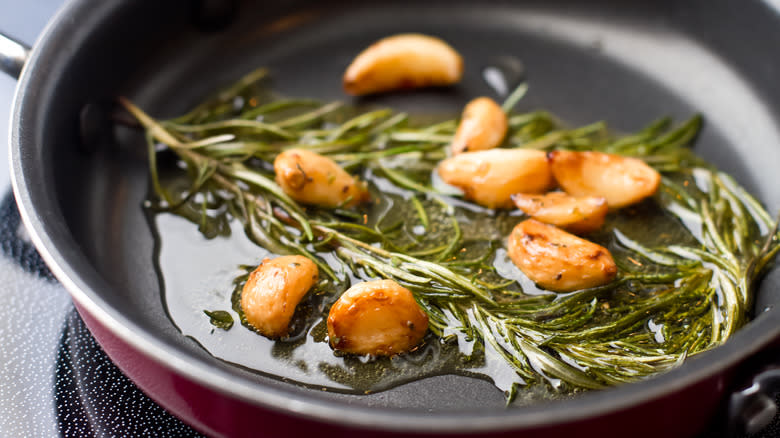
When we look back into the distant past, it's easy to think that all food was quite bland. People were just eating to survive and probably not worrying about flavors. So this might lead you to believe that humans haven't been cooking with garlic for all that long. Perhaps just a few hundred years or maybe since the Middle Ages. But the fact is humans have been using garlic for far longer than that.
Evidence suggests that people started cooking with garlic around 4,500 years ago in ancient Babylonia. Of course it's possible that humans used it long before that, but there's no surviving evidence. It was also used in ancient Egypt, where garlic was found in the tomb of Tutankhamun. And since Tutankhamun died in 1324 B.C., that's over 3,300 years ago. The use of garlic made its way into Chinese cuisine around 2,500 years ago and we haven't looked back. Today you'd be hard-pressed to find a cuisine that doesn't involve at least some use of garlic.
It's Totally Safe To Make Garlic Oil
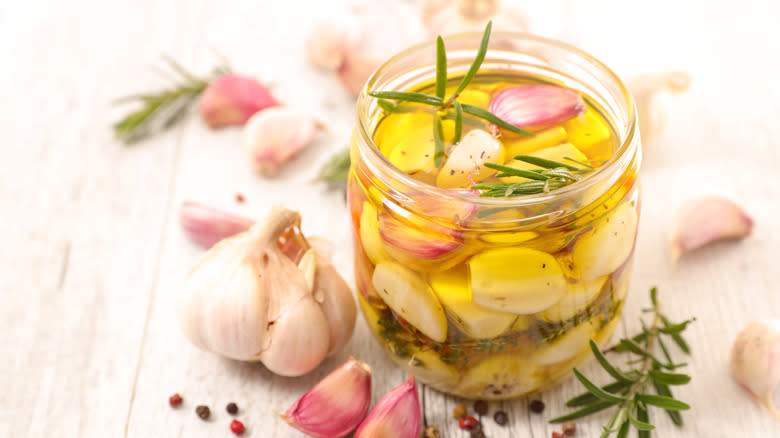
You probably think that making garlic oil is totally safe. It's just garlic and oil. What could go wrong? Well, according to the USDA, there's a risk of botulism from making your own garlic oil — when it's stored at room temperature. Botulism is a rare but serious illness caused by the toxin produced by the bacterium Clostridium botulinum, which thrives in low-oxygen environments like those found in improperly preserved foods.
Garlic itself can sometimes harbor Clostridium botulinum spores. When garlic is submerged in oil and left at room temperature, it creates a low-oxygen environment ideal for the growth of these bacteria. If the oil is not properly handled, stored, or refrigerated, it can lead to the production of botulinum toxin, which can cause botulism if consumed.
To minimize the risk of botulism when making garlic oil at home, it's crucial to follow safe food handling practices. Make sure to use clean, fresh garlic and properly sterilize all equipment, such as bottles or jars, before use. You should store your garlic oil in the fridge and use it within seven days.
Garlic Is A Spice
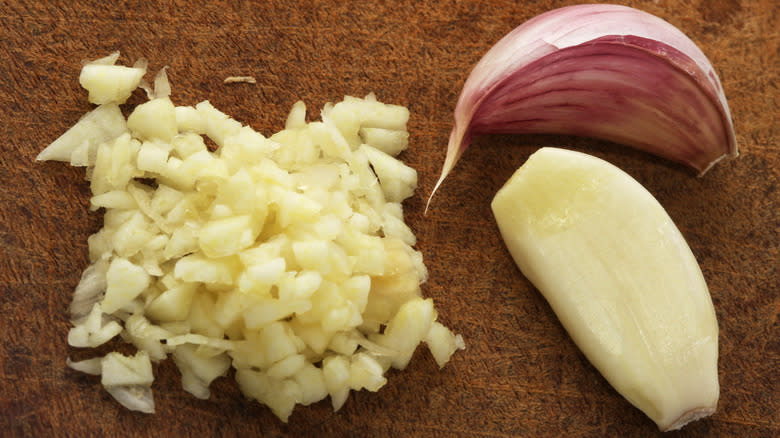
Think garlic is a spice? Think again! It's a common misconception that garlic belongs to the spice family when, in fact, it's a vegetable. This confusion comes from the fact that garlic is frequently used to add flavor to dishes in a manner similar to spices. However, understanding the botanical classification of garlic helps clarify its true nature.
Garlic belongs to the Allium genus, which includes other plants like onions, leeks, and chives. Vegetables are the edible parts of plants, such as roots, stems, leaves, or bulbs. Spices, on the other hand, come from the seeds, fruits, roots, bark, or other non-leafy parts of plants. Since garlic is the bulb of the plant, it falls into the vegetable category.
Of course, this doesn't mean that you're going to eat it in a similar way to other vegetables. You aren't exactly going to steam or sauté a full head of garlic and serve it straight up as a side like you might do with cabbage or broccoli. Instead, it's used to flavor dishes, so it's clear where this confusion comes from.
Read the original article on Mashed

